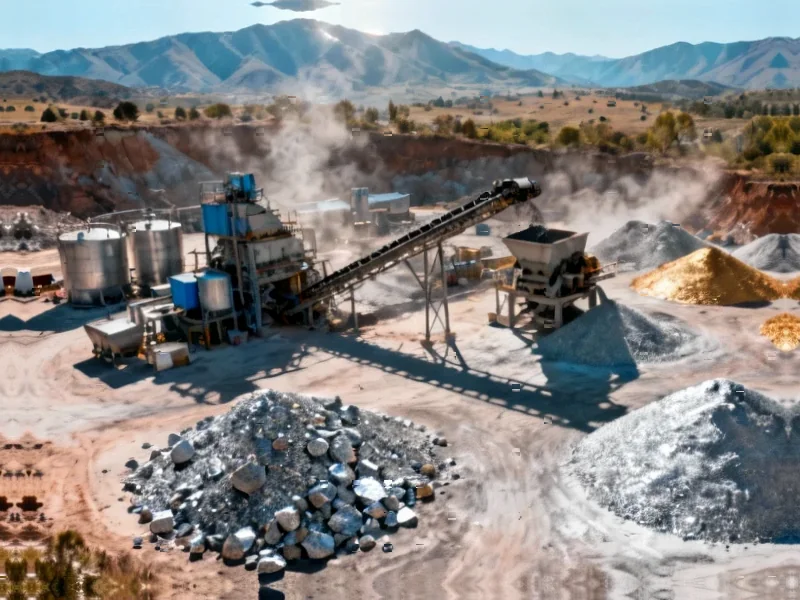According to CNBC, the global critical minerals race has triggered a dramatic rally in U.S.-listed rare earths mining stocks, with shares of Critical Metals advancing 241% over the last three months despite recent pullbacks. Other major players including NioCorp Developments, Energy Fuels and Idaho Strategic Resources have all surged well above 100% over the same period, while Energy Fuels’ stock price has quadrupled through the first 10 months of 2024 and NioCorp Developments’ shares have nearly quintupled. Tony Sage, CEO of Critical Metals, which controls one of the world’s largest rare earths deposits in southern Greenland, described this as the fourth major market boom following historical gold, oil, and tech booms. The surge reflects rare earths becoming a key bargaining chip in U.S.-China geopolitical competition, positioning these minerals as essential to powering future technologies.
The Supply Chain Security Imperative
What we’re witnessing isn’t merely a speculative bubble but a fundamental realignment of global supply chain strategy. For decades, Western nations outsourced rare earth processing to China, which currently controls approximately 80-90% of global refining capacity according to IEA reports. This concentration creates strategic vulnerability, particularly as rare earth elements become essential components in defense technologies, electric vehicles, and renewable energy systems. The stock surge reflects investor recognition that governments and corporations are now willing to pay premium prices for supply chain security, creating a structural shift in market dynamics that favors domestic and allied-nation producers.
From Commodity to Strategic Asset
The traditional mining business model focused on extraction efficiency and cost minimization is being replaced by a strategic partnership approach. Companies like MP Materials and Energy Fuels aren’t just selling raw materials—they’re positioning themselves as national security assets. This allows them to command premium valuations despite higher production costs compared to Chinese competitors. The business opportunity extends beyond mining to include processing, refining, and recycling capabilities that create integrated supply chains less vulnerable to geopolitical disruption. According to the White House supply chain review, this vertical integration is precisely what policymakers are encouraging through legislation like the Inflation Reduction Act, which provides substantial incentives for domestic critical mineral production.
Sustainability Challenges and Market Realities
While the growth trajectory appears compelling, investors must recognize the significant execution risks facing these companies. Rare earth mining involves complex environmental challenges and substantial capital requirements for processing infrastructure. Many projects face lengthy permitting timelines and local opposition, creating potential bottlenecks between stock price appreciation and actual production increases. Additionally, the current valuation surge assumes sustained government support and premium pricing, both of which could fluctuate with political changes or technological alternatives. The market must also contend with the reality that developing competitive processing capabilities requires years of investment and expertise development, meaning near-term profitability may not match current investor enthusiasm.
Beyond the Hype: Lasting Transformation
The critical minerals race represents more than temporary market excitement—it signals a permanent restructuring of global industrial policy. Even if stock prices experience volatility, the underlying strategic imperative for diversified rare earth supplies will drive sustained investment. Companies that successfully navigate the technical challenges while building strategic partnerships with both governments and technology manufacturers will likely emerge as long-term winners. The transition echoes historical shifts in other strategic commodities where geopolitical considerations permanently altered market structures and created new industry leaders. As Department of Energy initiatives demonstrate, this isn’t a fleeting trend but a fundamental rethinking of economic security in an increasingly competitive global landscape.




